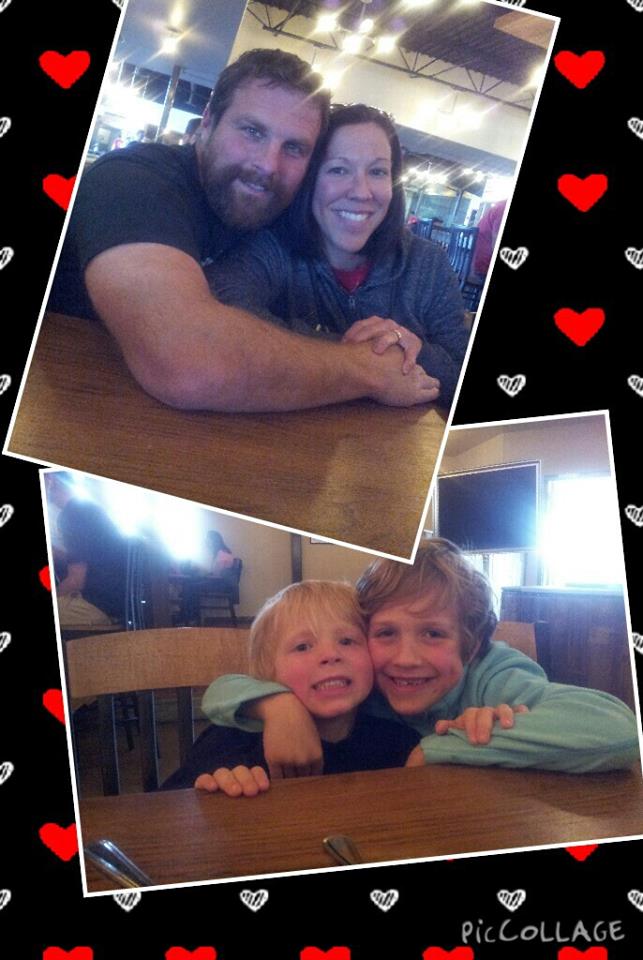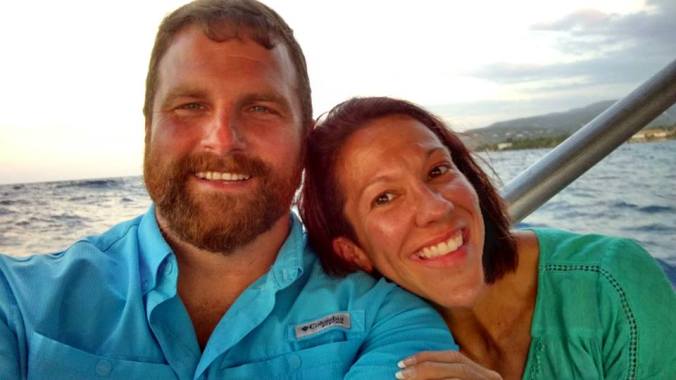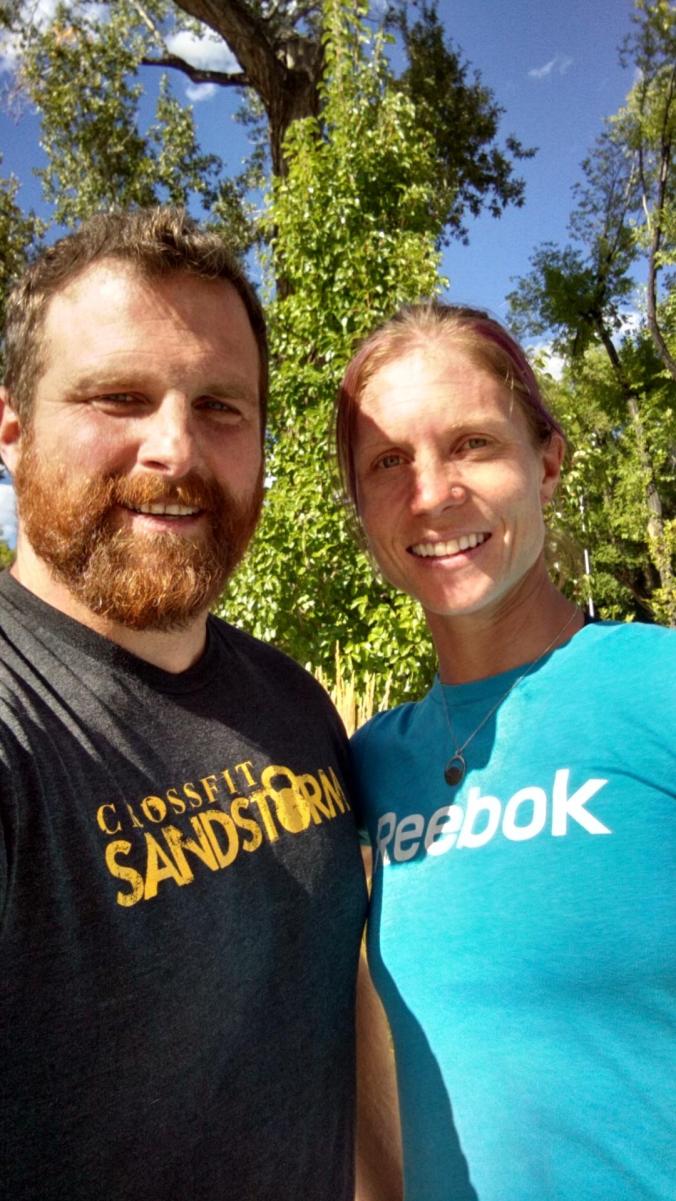I’m so excited to share the following story with you all. The man who wrote this became a lifelong friend of mine a little over a month ago in a matter of minutes. We connected via FaceBook and met at the New Mexico border of Colorado to start Move Mountains together. Thank you Jim Schoenberg for sharing your story with us, for letting me in your life and for being so brave to do what you do everyday.
How It Happened
It could’ve been any day. There I was, sitting at my computer scrolling through my news feed when I see this repost from Josh Everett on Jenny LaBaw doing a run through Colorado for epilepsy. I scratched my head and thought to myself, “hmm, what’s this all about?” So I clicked on the link to labawlife.com and started my review. I was blown away. A couple of things instantly came to mind: 1) How didn’t I know that she had epilepsy? and 2) Why is she bringing so much attention to epilepsy? I was puzzled to say the least. So I watched the YouTube videos and read up on Jenny’s background. Things began to resonate. As I meditated over the validity of the project and her stated goal, I left the site and returned to my news feed to see what else was going on. In a matter of seconds, I see another repost from CJ Martin come up on the same story. I shook my head thinking, “can this really be happening – do people really care about this?”
My Background
I began my CrossFit journey in early 2010 after exiting the ultrarunning circuit where I hit my goal of completing a 50 mile ultra under the course time cap (Avalon 50 on Catalina Island, CA). In 2011, I co-founded CrossFit Sandstorm and have been coaching and training ever since. So I’ve got a good understanding of CrossFit and have a great social network. Before CrossFit, I played soccer. I was a goalkeeper, which may explain a lot. I played at the D1 collegiate level for the University at Buffalo. Oddly enough, the first signs of my epilepsy emerged in those same collegiate years and that’s where my journey begins.
The Beginning
It was my junior year in college, making the year 1997. I was pursing my degree in Geographic Information Systems (GIS) and much of my course work was working with computer-based cartographic programs. I’d spend countless hours in front of a Macintosh, creating digital maps, correlating datasets and animating GIFs. But one day that all changed. I don’t remember everything but I do remember “the just before and the just after” parts. I was attempting to digitize a boundary and all of a sudden, my arm jerked and the mouse flew, causing the digital line to travel off-screen. I thought to myself, “that was odd.” So I shook my head to clear the cobwebs, gave myself some assurances, and kept on working. But it happened again, and again and again. I don’t recall how many times it happened or for how long, but I was getting nervous. I had been in the computer lab for 8 hours and clearly something was up. And that concludes the “just before” part. My very next memory is one that is with me forever. Never to be forgotten, never to lose its power. This marks the “just after” part. I am in an ambulance. I hear sirens. I’m traveling somewhere. I feel a mask on my face. My arms are strapped down – I can’t move. I see images of people hovering over me. They are speaking but I cannot understand them – I don’t know them. I begin to fight for my life. I begin to break free of the straps. I begin to yell. I try to get the mask off my face my thrashing my head back and forth. Panic breaks out. But then, I start getting assurances: “Sir, you are going to be OK. We are here to help. You had a seizure. We are taking you to the hospital.”
The Middle
After college and up until my early 30s, I had similar jerking issues when I was fatigued. I never thought anything of it. They were almost 2nd nature. When I got tired, I got jerky. They would happen while driving, while working, while falling asleep, while waking up. They would last no more than a second. I would equate it to someone “being startled.” Imagine you are focused on a task and deep in thought; then all of sudden you are startled – and you jump. That’s about the best analogy I can offer for how it feels to have a myoclonic jerk. They are so short, you think nothing of it. But for me, they started becoming warning signs. In the fall of 2008, I began experiencing a new symptom, persistent tinnitus. But unlike the ringing one would typically hear with tinnitus, I dubbed the sound, “brain noise.” To me, the sound wasn’t a ring and it wasn’t coming from my ears. It felt like my brain was humming at a very high frequency. It was making sleep very difficult and I was becoming exhausted with each passing day. I visited with my primary care doctor and was referred to an ENT for the tinnitus and given diazepam for sleep. At the ENT, everything checked out fine, perfect hearing. Now 2009 and still suffering with tinnitus, my primary care doctor referred me for a neurological evaluation. Upon meeting my first neurologist, the word epilepsy never came up. His first concern was an acoustic neuroma. So an MRI was ordered and once again, everything checked out fine – no tumors. By the time spring came around, I was exhausted – a walking zombie – and was scheduled for an EEG. Just 3 days before the appointment, I was again sitting at my computer when the jerks came back. They were just as intense as they were back in college. And this time, I was worried. I left my computer and headed towards a staircase. While going down, I had a jerk. I missed a step and half-fell into the wall. Shortly after, I grabbed a small piece of chocolate, unwrapped it from the foil, and went to toss it in my mouth. But I tossed it straight across the room. “What the heck is going on?” I thought to myself. The feeling was part déjà vu, part reality. I assured myself that things would be OK and I forced myself to sit back down in my chair and resume working. And that’s all I remember. Twelve years after my first tonic-clonic seizure, I had my 2nd.
The Now
From age 33 to age 39 things have really changed. After that 2nd seizure in 2009, I finally had the EEG and was diagnosed with a form of generalized epilepsy called JME. I was told by my doctor, “you now have a disability.” I was told by my doctor, “you will need permission to drive.” I was told by my doctor, “you may not be able to work.” I was told by my doctor, “you’ll have to take anti-epileptic drugs (AED) for the rest of your life.” The list went on and on. I was officially boxed up, labeled and shipped off into the epilepsy corner. Since that fateful day in 2009 and up until 2014, I experienced 4 tonic-clonic seizures. But after switching neurologists and adjusting my AEDs, I have been seizure free – both myoclonic and tonic-clonic. The quality of my life has vastly improved and the symptoms are all but gone. However, as I reflect back I can tell you that the hardest part of facing my epilepsy was the amnesia I’d experience after a tonic-clonic. After a seizure of that magnitude, I would come to not knowing who I was, where I was, or who anyone else was (including family members). Of the 4 recent seizures, 1 happened to occur at our CrossFit gym and was clocked at over 5 minutes. With my friends, family and customers present, it took me almost 3 hours for the amnesia to run its course. But I continue to be mindful of taking medications, which at times can be challenging. But where I spend most of my effort is in obtaining sufficient rest, especially as I travel. I have found jetlag to be one of the most difficult things to cope with and I am ever-vigilant when I take trips – planning for extra time before and after the travel to ensure proper recovery. With that one exception, I do believe my life has stabilized. I am quite pleased with my new doctor and have more dialogue with those closest to me on how epilepsy has impacted our lives. I am also hopeful because research on JME shows that things are supposed to improve as I enter the 4th decade of life, which is just around the corner. To say the least, I am optimistic that the worst is behind me.
My Family
I owe a lot to my family: my wife, 2 boys and my daughter. I can only imagine how hard it must be for them to understand me. They’ve watched me change. They don’t understand how it feels, heck very few people do. But they’ve had to suffer in a very different way. For example, you hear the phrase, “I’m tired” thrown around a lot. But “I’m tired” to an epileptic has an entirely different meaning. I don’t know how to articulate that point but I can’t emphasize it enough. I say “I’m tired” quite a bit – but I say it as a warning. I say it to let people around me know that my brain isn’t working right – that I need to stop doing anything; stop thinking, stop moving, stop talking, stop doing…and just lay down. I need to just…be. Therefore, when you have a big family with lots of responsibilities and 3 kids, the phrase “I’m tired” is not going to go over well and they’re forced to bear the burden of daddy checking out. I also have very fast mood swings and temper flares. If you have kids, think 5x faster than the worst 2 year-old tantrum you’ve ever witnessed. My mood can change on a dime. Not most, but ALL of the time this mood shift is towards the negative spectrum. I end up hurting those I love the most and to make matters worse, I don’t even know I am hurting them. My brain just fires so fast and things are expressed so quickly that there is no chance to censor any of it. There is no filter because there is no time. During these moments, everything feels like a race. Things move faster and faster and it’s almost impossible to slow them down. Eventually, things subside and you’re forced to backtrack so you can figure out “what the heck just happened?” So just recently, my wife and I had a conversation about these past few years. It was the first time we took a step back and reflected on my epilepsy. And then, it dawned on me. I came to the realization that when we were first dating, I was not diagnosed with epilepsy. I wondered, “had it really been that long?” That moment was profound as I sat there contemplating our past. My wife had been there by my side, coping with my epilepsy since day one – I owe her everything.
My Future
But why are we even having this discussion? I owe that to Jenny LaBaw. Facing my own issues, both personal and inter-personal, has allowed me to break free from the grasp epilepsy has had over me. With just a few months until my 40th birthday, I finally had the talk with my kids about epilepsy: about what to do, how to help, what not to do, etc. We laughed, we cried, we watched videos and as a result, they loved me even more. And I decided on a whim, with little convincing, and just 4 days after returning from a Caribbean vacation, to help kick off the Move Mountains challenge. Although I had absolutely no training under my belt and flat out told Jenny I was in no shape to run 25 miles to Durango, she was convinced I had to come. On the fence, I turned to a song I use quite often to help me cope with seizures. At the end of this song, the chorus simply repeats [shouting], “walk with me”. As if the message was subliminal, I knew what I had to do. I knew I could walk with her, I knew that I should walk with her. So I gathered up my gear, relied on my past distance running experience and kicked off Move Mountains at the NM state line on September 19th. I gave a valiant effort but at mile 14, I called it quits due to cramping and nausea. In hindsight, I realized how unprepared I was for the challenge – but I was 100% glad that I took part. As I left Durango and now move forward in life, I return with new vigor and a new friend. I always enjoy working out and enjoy the challenges of programming strength and conditioning for our community. Jenny and I talked about perhaps doing a CrossFit fundraiser for epilepsy awareness in 2016 or 2017. Personally, I am a pretty average at CrossFit, always finishing in the top 50% in my region. But that was for the Open; in 2016 it’ll be Open Masters (LOL). But CrossFit teaches me a lot about what can be done. The ability to achieve anything you set your mind to. Perhaps that’s my connection to it. During our 14 miles together I told Jenny a story about the day my EEG was scheduled (just a few days before my seizure). I left the neurologists office that day with his final words being, “…see you in a few days, I’d hate to diagnose you with epilepsy at 33 years old.” How does one respond that something like that? Well, you start by moving mountains.



Great post. Thank you, and thank him.
LikeLike
Thank you Jim and thank you Jenny for posting Jim’s story.
LikeLike
Wow Jim! Thanks for sharing. I iwish you the best.
Frank Dolan
LikeLike
I really learned so much from this posting. I especially liked how you addressed the phrase “I am tired” and the implications that can have for someone diagnosed with epilepsy. I thought it was very insightful how you described the mood swings, etc. thanks.
LikeLike
Yes, I agree with Kimberly. Thank you for sharing your story, Jim and I too learned a lot. It is amazing how varied and how many different types of epilepsy there are! I hope your fourth decade is all about your body healing itself! Jenny, I’m so happy to hear another story of how you have inspired someone by your amazing journey!
LikeLike